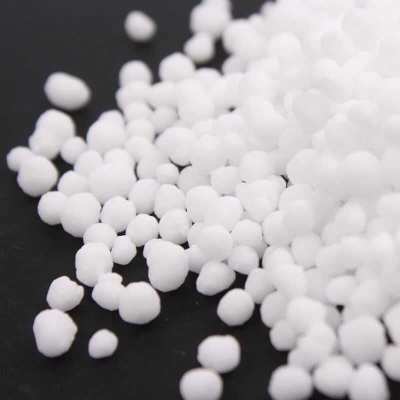-
Categories
-
Pharmaceutical Intermediates
-
Active Pharmaceutical Ingredients
-
Food Additives
- Industrial Coatings
- Agrochemicals
- Dyes and Pigments
- Surfactant
- Flavors and Fragrances
- Chemical Reagents
- Catalyst and Auxiliary
- Natural Products
- Inorganic Chemistry
-
Organic Chemistry
-
Biochemical Engineering
- Analytical Chemistry
- Cosmetic Ingredient
-
Pharmaceutical Intermediates
Promotion
ECHEMI Mall
Wholesale
Weekly Price
Exhibition
News
-
Trade Service
Although glass is a commonly used material in our daily lives, it also has difficult scientific problems
.
Contrary to what one might expect, the true nature of glass is still a scientific puzzle, and scientific research on its chemical and physical properties is still in progress
.
In fact, in chemistry and physics, the term glass itself is a variable concept: it includes the window glass material we know, but it can also refer to a series of other materials whose properties can be passed similar to glass.
Behavior to explain, for example, includes metals, plastics, proteins, and even biological cells
.
Although glass may make an impression, it is by no means a traditional solid
.
Generally, when a substance changes from a liquid state to a solid state, the molecules are arranged in a row to form a crystal pattern
.
In glass, this does not happen
.
Instead, the molecules are effectively frozen in place before crystallization occurs
.
This strange and disordered state is characteristic of different glass systems, and scientists are still trying to understand how this metastable state is formed
.
Now, scientists from the University of Konstanz have discovered a new material state of glass-liquid glass.
The liquid glass discovered this time has previously unknown structural elements.
This also raises questions about glass and its transformation properties.
New insights
.
It is worth mentioning that colloidal suspensions are mixtures or fluids containing solid particles, whose size is micrometers (one millionth of a meter) or larger and larger than atoms or molecules, so it is very suitable for research with optical microscopes
.
To date, most experiments involving colloidal suspensions have relied on spherical colloids
.
However, most natural and technological systems are composed of non-spherical particles
.
In this study, the research team used polymer chemistry to make small plastic particles, stretched and cooled them until they became ellipsoidal, and then put them in a suitable solvent
.
Because of its unique shape, the researchers' particles are more directional
.
The researchers then changed the particle concentration in the suspension and tracked the translation and rotation of the particles with a confocal microscope
.
At a certain particle density, the directional motion freezes, while the translational motion persists, causing the particles to aggregate to form a glassy state with a similarly oriented local structure
.
What researchers call liquid glass is the result of these clusters obstructing each other and mediating characteristic long-range spatial correlations
.
These prevent the formation of liquid crystals, which will be the overall ordered state of the substance expected by thermodynamics
.
In fact, what the researchers observed is that two competing glass transitions—one is a regular phase transition and the other is a non-equilibrium phase transition—interact
.
Researchers believe that this is a very interesting phenomenon from a theoretical perspective
.
This experiment provides evidence for the interaction between the critical fluctuation and the glassy stop, and the scientific community has been paying attention to this for a long time-for decades, the prediction of liquid glass has been a theoretical speculation
.
The results further indicate that similar dynamics may play a role in other glass-forming systems, and therefore may help clarify the behavior of complex systems and molecules, from very small (biological) to very large (cosmology)
.
It may also affect the development of liquid crystal devices
.
Related research results have been published in the "Proceedings of the National Academy of Sciences" (PNAS)
.
.
Contrary to what one might expect, the true nature of glass is still a scientific puzzle, and scientific research on its chemical and physical properties is still in progress
.
In fact, in chemistry and physics, the term glass itself is a variable concept: it includes the window glass material we know, but it can also refer to a series of other materials whose properties can be passed similar to glass.
Behavior to explain, for example, includes metals, plastics, proteins, and even biological cells
.
Although glass may make an impression, it is by no means a traditional solid
.
Generally, when a substance changes from a liquid state to a solid state, the molecules are arranged in a row to form a crystal pattern
.
In glass, this does not happen
.
Instead, the molecules are effectively frozen in place before crystallization occurs
.
This strange and disordered state is characteristic of different glass systems, and scientists are still trying to understand how this metastable state is formed
.
Now, scientists from the University of Konstanz have discovered a new material state of glass-liquid glass.
The liquid glass discovered this time has previously unknown structural elements.
This also raises questions about glass and its transformation properties.
New insights
.
It is worth mentioning that colloidal suspensions are mixtures or fluids containing solid particles, whose size is micrometers (one millionth of a meter) or larger and larger than atoms or molecules, so it is very suitable for research with optical microscopes
.
To date, most experiments involving colloidal suspensions have relied on spherical colloids
.
However, most natural and technological systems are composed of non-spherical particles
.
In this study, the research team used polymer chemistry to make small plastic particles, stretched and cooled them until they became ellipsoidal, and then put them in a suitable solvent
.
Because of its unique shape, the researchers' particles are more directional
.
The researchers then changed the particle concentration in the suspension and tracked the translation and rotation of the particles with a confocal microscope
.
At a certain particle density, the directional motion freezes, while the translational motion persists, causing the particles to aggregate to form a glassy state with a similarly oriented local structure
.
What researchers call liquid glass is the result of these clusters obstructing each other and mediating characteristic long-range spatial correlations
.
These prevent the formation of liquid crystals, which will be the overall ordered state of the substance expected by thermodynamics
.
In fact, what the researchers observed is that two competing glass transitions—one is a regular phase transition and the other is a non-equilibrium phase transition—interact
.
Researchers believe that this is a very interesting phenomenon from a theoretical perspective
.
This experiment provides evidence for the interaction between the critical fluctuation and the glassy stop, and the scientific community has been paying attention to this for a long time-for decades, the prediction of liquid glass has been a theoretical speculation
.
The results further indicate that similar dynamics may play a role in other glass-forming systems, and therefore may help clarify the behavior of complex systems and molecules, from very small (biological) to very large (cosmology)
.
It may also affect the development of liquid crystal devices
.
Related research results have been published in the "Proceedings of the National Academy of Sciences" (PNAS)
.







